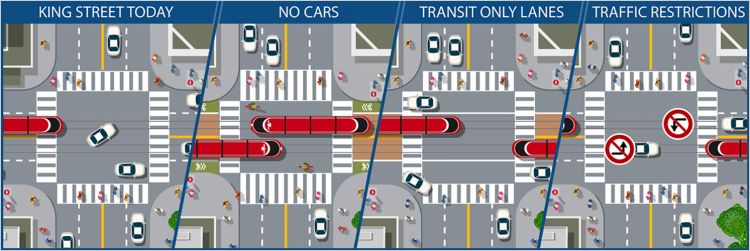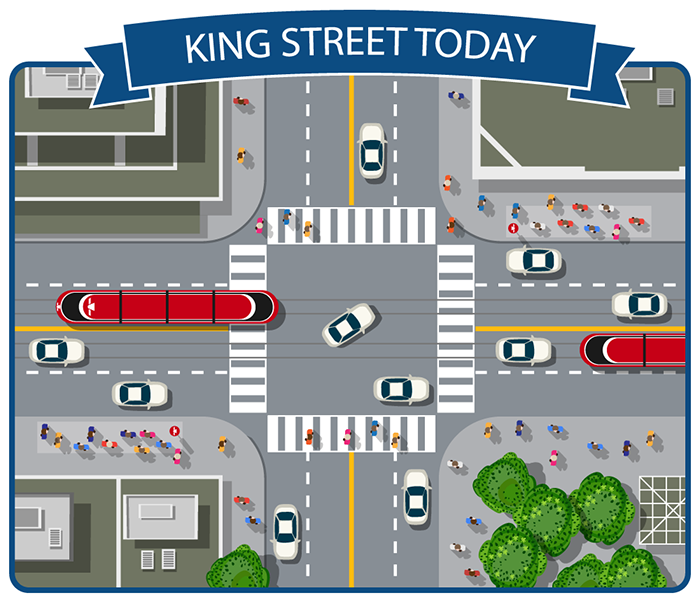
Illustrations: Steven Cretney, Pembina Institute
Almost 65,000 people use the 504 King streetcar every weekday to travel along King Street, compared to 20,000 cars. Finding ways to reduce delays and travel times on the 504 can increase demand for the service and provide a better travel experience for existing travelers. Below we look at different “families” of solutions to improve transit operations and the public realm along King Street, and points to options for pilot projects.
The King Street transit priority corridor runs from Dufferin Street to Parliament Street, a length of over five kilometres. No one solution can fit the entire corridor, so it is necessary to consider the needs of different segments of King Street. The information below is presented as broad groupings, and the needed solutions will likely draw elements from each grouping. Solutions can also be implemented in time-restricted ways, like during rush-hour only, on weekdays, or weekends only.
Travel times were calculated using work by Steve Munro, supported by the Toronto Transit Commission and the City of Toronto, for travel data collected October 1-31, 2015.
King Street today
Definition: Transit and private vehicles operate in mixed traffic, sharing lanes.
Travel time: One in four peak period trips between Wilson Park and River Street are currently greater than 50 minutes.

No cars
Definition: Cars are prohibited from accessing a certain segment of the street. The street is reserved for transit, pedestrian, and sometimes cycling traffic.
This option prioritizes transit and pedestrians over cars, and the re-allocation of the street creates more space for pedestrians, cyclists, and sidewalk cafes.
Travel time: 90 per cent of trips between Wilson Park and River Streets would take less than 50 minutes.

Transit only lanes
Definition: Private vehicles and transit operate on the same road, but transit has a designated lane in which private vehicles are prohibited.
Reduces transit vehicle delays caused by car, but motorists maintain access for vehicle traffic and service deliveries.

Traffic restrictions
Definition: Cars are allowed to operate on transit corridors with some limitations (e.g. no left turns at specific intersections, or no through-traffic in certain segments of the corridor). Some left-hand turn restrictions already exist along King Street during rush hour.
Enforcing these restrictions at all times allows for better transit flow. This also minimizes impacts on delivery and service vehicles.

Nithya Vijayakumar was a senior advisor leading transportation and urban development projects in the Pembina Institute’s Ontario office until 2017.



